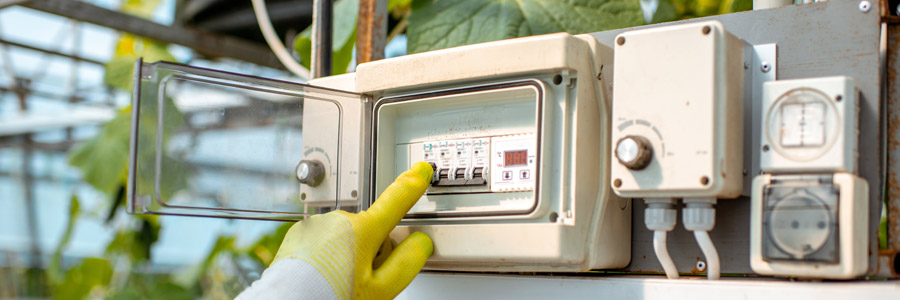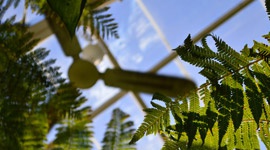Warmer weather is here! But wait, how does temperature effect my plants and what should I be on the lookout for?
By Abha Gupta (MS Horticulture) - Assistant Horticulturist
Ideal temperature
Most biological processes will speed up at higher temperatures, and this can bring about positive benefits such as faster growth or fruit production. The ideal temperature for most plants is 72-76°F during the day and the night temperature can drop 5-10°F. When the temperature drops more than 15 degrees, condensation is likely to occur which may cause humidity and subsequent mold issues. As with most plants, daytime temperatures above 85°F and below 55°F slows or stops the growth of plants.
The impact of too much heat
When the temperature is too high, plants respire rapidly. During respiration, plants take in oxygen, break down molecules to release and consume energy, and then release carbon dioxide, just like humans do. In fact, a plant cell uses as much oxygen as a human cell. With all the focus on respiration, plants take up less carbon dioxide that they would otherwise put towards making energy through photosynthesis. When this happens, there is not enough carbon dioxide available for the plant to complete photosynthesis – specifically speaking, it cannot complete the dark reaction (Calvin cycle). In essence, under high temperatures the plant is focusing on respiring and consuming energy rather than photosynthesizing and producing energy. With less energy, the plant has less fuel to put towards growth and fruit development which can lead to smaller fruits.
What's water used for, really?
Temperature has a direct impact on water use. When the temperature rises, plants transpire more. In effect, they are releasing water as a means of cooling themselves and regulating their internal temperature. Plants regulate the process of transpiration and cooling by using specialized plant organs called stomata. The stomata are tiny holes in the leaves which can open or close, limiting the amount of water vapor and gases, like carbon dioxide and oxygen, that can escape. Transpiration rate is also dependent on the light, atmospheric carbon dioxide, humidity, and plant species.
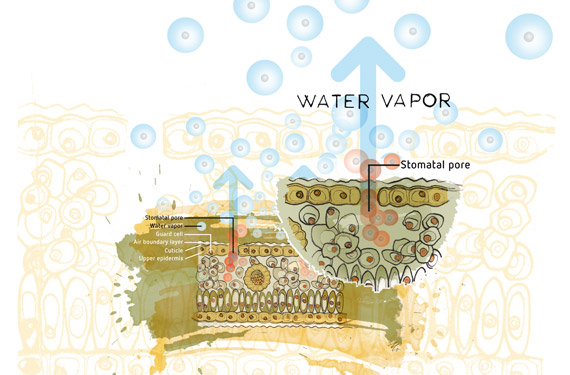
How the difference between day and night temperatures (DIF) influences growth
The difference between day and night temperatures (DIF) influences plant growth, including internode length, leaf and shoot orientation, chlorophyll content, branching, and flower development. For example, some plants delay flowering if the day temperature is lower than the night temperature (negative DIF). In contrast, cooler night temperatures can maintain a compact growth form and influence the development of plant specific compounds.
While the growth of foliage is not greatly affected by DIF, the growth of the internode stem sections is strongly affected, especially during the period of rapid growth. Seedlings are more sensitive than adult plants to DIF. Plants grown under a positive DIF (warmer day time temperature than night time), are taller than plants grown at a zero DIF (same temperature during the day and evening). Lower night time temperatures help to maintain water balance in the plant, which is the main reason for increased stem elongation. Plants grown under a zero DIF would still be taller and have longer internodes than plants grown under a negative DIF. Negative DIF also leads to shorter petioles, flower stems, flower peduncles, and leaves. Understanding the impact of DIF can be used to influence management decisions. For example, negative DIF at an early stage of stem elongation can be implemented to limit plant height.
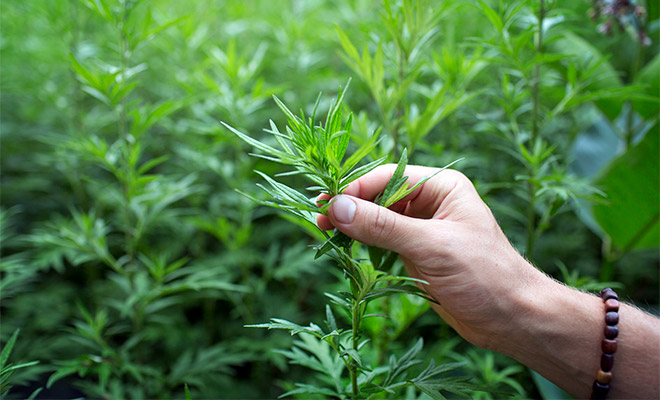
Shorter temperature drops (of about 2 hours) can also cause stem elongation, generally at or just before the first daylight, which is when plants are most responsive to temperature changes. This is usually easy to accomplish in greenhouses during the autumn of cool climate zones because of the naturally low night temperature.
In addition to stem elongation, sugar transportation is influenced by DIF. Generally, sugar transport occurs mostly during the night when temperatures are cooler than the day and sugars move to the warmer parts of the plant such as the flday aowers and fruits. If there is a negative DIF, sugar transportation to growing tissues, where energy is needed to fuel higher levels of respiration, can be restricted thereby limiting growth and yields.
Remember to look below as well! Soil and substrate temperature
Don't forget about what goes on below ground! Soil or substrate temperature also has a big impact on our plants. Nutrients are generally more available in warmer soils. This is in large part due to how temperature affects the microbial community. For example, microbes are needed to convert ammonium to nitrate, in the root zone, which is then taken up by the plant. The best conditions for microbial life are temperatures between 45-95°F, below and above which they either will not survive or perform inefficiently. When the temperature is not ideal for microbial life, it is best to supply the nitrogen demand for your plants with nitrate, rather than ammonium. The nitrate will be taken up by the plant, without the need for microbes to break it down, whereas ammonium does require microbes to convert it to nitrate, which then the plant can absorb. In addition to proper temperature, microbes require water, oxygen, and food, which for them is organic matter, in order to survive.
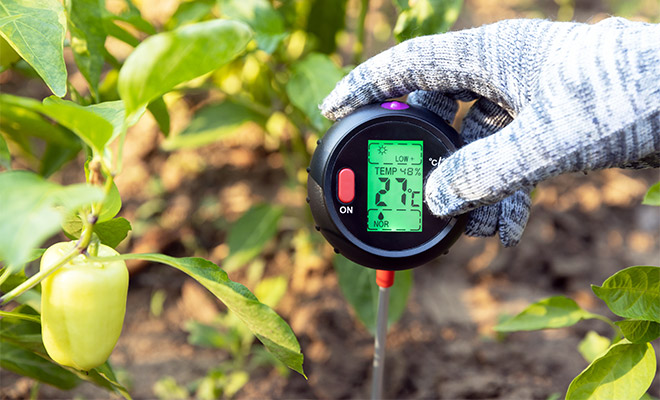
Temperature as it interacts with humidity
While temperature is a primary environmental factor that affects plant development and growth rate, it is not an isolated factor. Temperature affects the amount of vapor, or gaseous water, that can be in the air. Warmer air allows for more vapor whereas cooler air allows for less vapor. This explains why snowy environments often have very low humidity. Growers look to the vapor pressure deficit (VPD), which is the difference between the saturation point and the air vapor, to help guide management decisions. Looking to relative humidity is another way to frame these same decisions. When humidity is high, vapor slowly moves between the leaves and the ambient environment. This means the plant can cool less effectively and can become stressed. Also, water will condense as a thin film on the leaf surface, creating the perfect environment for pathogens. On the other hand, when humidity is low and vapor moves more quickly, then plants may be unable to replace the amount of water it loses through transpiration.
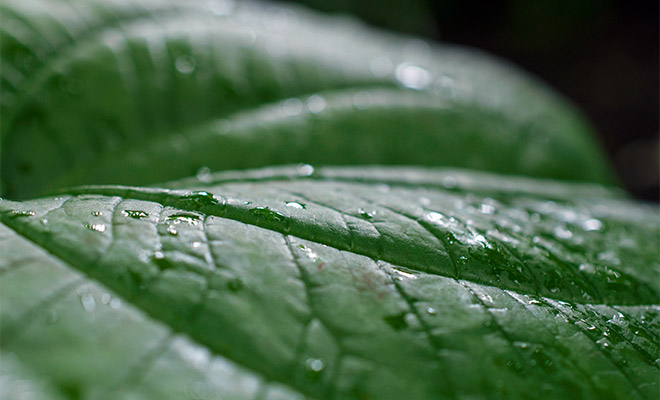
Look to leaf thickness to gain a visual impression of the potential of a plant to recover from low humidity (high VPD). The leaves actually become thinner during the day because they lose water through transpiration, but when a leaf is thinner on one night than it was the previous night, this is a sign that the plant has failed to recover.
Temperature throughout the plant
When reviewing the influences of temperature on the plant, it is important to understand how the temperature of the plant itself varies between the leaves, fruits, flowers, and stems. Understanding plant anatomy as it relates to temperature can help growers predict where temperature changes will stress or benefit their plants the most. The temperature of the fruit is closest to the air temperature and is most directly affected by the ambient temperature. Flowers generally have a higher temperature than that of leaves and the air temperature, which influences the petals to transpire at a lower rate than the leaves. The leaves and plant tissue where photosynthesis occur require a higher temperature than the ambient air, however, this is still generally cooler than the flowers. Furthermore, during photosynthesis as light is absorbed by the tissue, some of it is converted into heat energy, which adds reason as to why the leaves would have a higher temperature than the ambient air. Looking to the overall structure of the plant, the top of the plant heats up more easily, since heat rises and generally the greatest light exposure is at the top of the plant. In comparison, the bottom of the plant is closer to the ground, which serves as a thermal buffer, and is generally more shaded.
Strive for ideal conditions, monitor, and enjoy your grow!
While it is impossible to predict the weather, creating a dialed in system will provide resilience to whatever changes may be happening just beyond its perimeter. Strive for ideal conditions, monitor your plants' responses as described here, and enjoy your grow!
